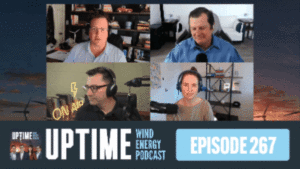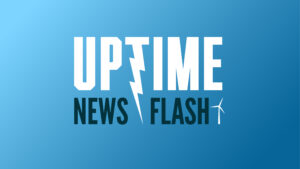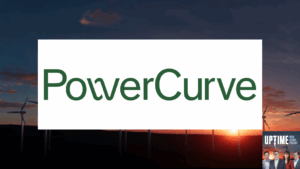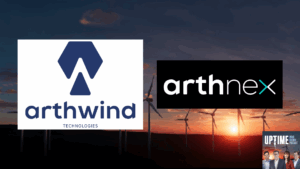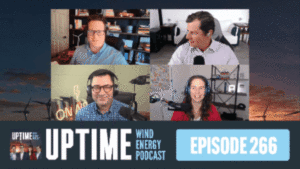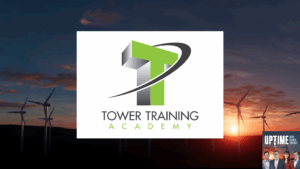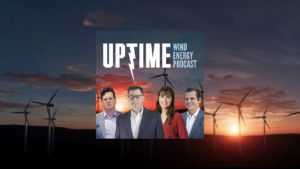In this episode we discuss the news of New York State soliciting for 2.5GW of off shore wind power, the UK betting on battery storage, and lightning strikes on trees.
Learn more about Weather Guard Lightning Tech’s StrikeTape Wind Turbine LPS retrofit. Follow the show on YouTube, Twitter, Linkedin and visit Weather Guard on the web. Have a question we can answer on the Uptime Wind Energy Podcast? Email us!
Podcast: Play in new window | Download
Full Transcript: EP19 New York State Adding 2.5GW of Off Shore Wind; UK Bets on Batteries; Lightning Strike Research on Trees
Dan: This episode is brought to you by Weather Guard Lightning tech. At Weather Guard, we make wind turbine lightning protection easy. If you’re a wind farm operator, stop settling for damaged turbine blades and constant downtime. Get your uptime back with our StrikeTape lightning protection system. Learn more in today’s show notes or visit weatherguardwind.com/striketape.
Allen Hall: Welcome back. I’m Allen hall.
Dan: I’m Dan Blewett and this is the Uptime Podcast where we talk about wind energy engineering, lightning protection, and ways to keep your wind turbines running.
all right, welcome back. This is the uptime podcast. This is episode 19. I’m your cohost Dan Blewett. And in today’s episode, we’re going to cover a bunch of different news related topics in wind energy. So first New York. Has released some recent solicitation for two and a half gigawatts of wind power to be located somewhere off shore, which is pretty exciting.
Um, we’re going to talk about a little bit about ways or people are actually still getting struck by lightning, which is scary to think about and, um, self driving cars, all sorts of stuff. Alan, you can’t laugh yet. I haven’t introduced you. All right. And then, um, the UK has cleared a path for some giant batteries to source some of this solar energy.
And wind power energy, which is also something that’s, uh, I mean the battery potential in the sector is pretty exciting for the future. I mean, we don’t think about homes being able to be powered by batteries and businesses, but that might be reality pretty soon. Um, we’ll talk a little bit about lightening strikes and how does credible, how incredible the numbers daily lightening strikes.
There are all throughout the world. I mean, 8 million a day, essentially. And then last arranged some Alan’s takes, uh, takeaways from the Dallas, um, virtual wind, uh, seminar, the wind operations from this past week. So Alan heard you over there. How are, how are you today?
Allen Hall: Yeah. Lightning strikes to people are really serious.
And you always cringe when you hear that, because there’s so many ways to avoid them today. And some parts of the world’s a little harder than others, but, uh, you still read about it and it’s a very common event. It’s not zero and it’s not thousands, but it’s somewhere in between. And yeah. I’ve gotten better over time, but I did, did, uh, attend a number of the wind operations, Dallas, uh, virtual conference, that Reuters events, uh, I had going this past week and that was really interesting.
Uh, I got a lot of, uh, new insight into the industry in particular, the. Um, the, the, the monitoring that happens and all the technology that’s evolved around it and performance and how the performance of the turbines is monitored and how, how it’s interpreted and how they try to maximize, uh, the full power business, the full power of generators.
It was, it was interesting.
Dan: Yeah. So wind operations. Dallas is a yearly conference this year. They went virtual obviously. Um, so they claim to have a 2,500 virtual attendees, which is pretty good. And it’s the mainly for asset owners and operator, uh, and operators and looking for just insights into when O and M.
So, um, any particular takeaways, any topics that really grabbed your attention?
Allen Hall: It’s actually the last presentation that there were a lot of good presentations and I’ve watched some on drones. I’ve watched, uh, ones, one with essentially technicians talking about the different things that they go through and how difficult that is.
And then all the remote areas of the world. They have to go work in and how difficult, difficult it is to communicate to the outside world what’s happening, which is totally true. Uh, and then. The the, the last one was regarding the efficiency of wind turbines. And you and I had talked about this previously, but the, the, the, the, one of the authors of the paper, uh, was talking about the decrease in efficiency of wind turbines over time in the United States, uh, and comparing that a little bit to the efficiency of wind turbines in different places in Europe.
And essentially it goes like this. Roughly, I’m going to speak in rough, rough terms here, uh, that the efficiency of the wind turbine goes down about 1% per year. And newer wind turbines. That may be a little bit less, uh, but that the wind turbines are using larger and larger blades, even though the towers haven’t gone up.
So the ability for the wind turbines to generate power at low winds is going up substantially. So they get to the max rated power sooner and they stay at max rated power. But in order to do that, the tip speeds have to go up. Yeah. And when the tits speeds go up, they’re having other issues, a size, a blade goes up.
There’s just more load that they have to deal with it because of the weight of the blades goes up. Uh, but the, the 1% decrease per year happens every year until they get to the 10th year. And in the United States, the production tax credits drop off. And what you see as a more, a steeper increase in the inefficiency.
So there’s like another, like almost like a 2% drop at year 10, 11, and 12, or somewhere in there. Like, uh, the operators decide they’re not gonna, because they’re not getting the tax credit are not gonna, don’t have the money to maintain the turbines. And so they essentially reduce the amount of term maintenance, which increases the inefficiency.
And in other countries, that’s not the case. The inefficiency kind of takes it, gradual turned down. I just thought that was interesting because if we’re really serious about this industry long term, first off, the roughly 1% decrease per year is not good. So at the end of roughly 20 years, there’s the efficiency is like 85%.
So it’s not exactly 1% a year, but roughly, so your area, you have lost 15% of the efficiency of the turbine. That’s a big. Loss at, at some point you have to say, well, yeah. Is it worth running this thing anymore? Maybe not. Or what things can we do to keep them. Running more efficiently that’s I think is a, is the bigger issue.
It seems like they’re the leading edge erosion and blade efficiency in the air is a, is a big issue. And it doesn’t seem that there’s many structural issues. Lightning is obviously one of them because it’s just, it’s going to screw up your dynamics. If you have a lightening damage to the surface of the blade, it’s going to screw up the aerodynamics, going to make the blade inefficient again.
Uh, so you’re gonna see a lot more based on those numbers. It makes a lot of sense then for. What we’re seeing is a lot of emphasis on, uh, fixing the leading edge erosion it. And when we talked to Danny Ellis at sky specs, he was saying that pretty much every blade in the world has some sort of leading edge erosion.
And that’s a, it’s a big maintenance task. Uh, but that’s gonna need to get fixed. If we’re going to maintain the efficiency. Obviously getting the lightening protection right, is gonna increase it efficiency, and it just. It just seems like as an industry, now that we have that data, we need to act upon it and make the wind turbine efficiency, uh, stabilize at some point, you’d think it would stabilize, but it doesn’t, it’s kinda like buying a car, you know, it gets a little more efficient cause the bearings wear down on that kind of thing, but you can.
On a car, you would try to improve that. And especially on an electric vehicle, you would try to not have those decreases when you lie. If you lose 15% efficiency, uh, in the sort of the mechanics of a, of an automobile, I think you’d be concerned about it. But for some reason
Dan: they lose a 1% of fuel efficiency per year for cars.
And that’s one of the arguments, you know, there’s arguments for against owning versus leasing a car. And one of the arguments. Uh, against ownership is that you lose 1% a year in fuel efficiency every year, the yellow.
Allen Hall: Is that due to a degradation in the, in the motor or is it just wheel bearing? So it’s
Dan: a lot of, kind of
Allen Hall: okay.
Cause a lot, a lot of it in the car is, is a rolling resistance, has a lot to do with inefficiency. So buying cheaper tires probably increases your rolling resistance and obviously the transmissions aren’t as efficient, but unlike an electric car on a, on a gas powered car, You probably wouldn’t notice it all that much, uh, an electric field here in, I don’t know.
It was a little bit more just seems like we’re at a point now where. You know, we’re roughly 120 plus years into this sort of mechanization, 140 years into the mechanization. We would have these things sort of figured out by now. And we don’t. No, we totally don’t. So it’s just frustrated to see those numbers.
Don’t apply. Dang it, are we not making things better? What are we doing? And are we putting the effort? Are we putting the effort in the right places? Because I think as an industry, we’ve got to do better on the, on the backend. Every, I think everybody will admit that we had to do better on the back end on the last.
Last 10 years, we needed to be more efficient and keep the efficiency up to the children’s. And so for text generators, leading edge protection, lightning protection improvements are going to be the way of the future. You already see some of the companies making a good bit of effort in those areas, and that’s going to not, that is not going to slow down.
And the drone inspections are going to go away any way up, just because of it.
Dan: Well, does the forest, so we talked about. One of the things we chat about this week was lightning being deemed a force machine as far as not really being covered by insurance and helping with repairs for that. Is this something that needs to change?
Is this something that’s maybe causing that 1% per year or are there other factors that are maybe not considered essential as far as the service, you know, O and M contracts go?
Allen Hall: Well, I think. When you start to put likely events into the acts of nature, pile it. What it does when the engineering side is like, well, then I don’t have to do all that much if something were to happen.
And when it’s just out of my control, what’s not out of your control again. Right. I go back to, we’ve been in 140 plus years of the mechanized age and we’ve been well, Ben Franklin. And the lightning rod is 1750s. So that’s a long time ago. Can we not figure some of this stuff out and, and, uh, make it, make it more efficient for whatever reason, we would never know, allow that to happen on an airplane?
Well, cause it’s full of 200 people, plus people 200, 800 people that would be affected by some sort of catastrophic lightning strike, but on a wind turbine, it’s like, huh, you know, We can’t, we can’t, uh, predict it’s going to happen or we have no control over it, or we’re just wiping her hands of it, which is the wrong approach.
If the industry wants to be here longterm and make that sort of impact, then this lightening can’t be a forest maturer anymore. We need to be designing against it and figure out what’s going on out in the field and fix it. That’s the way to move forward
Dan: while knowing. This much about lightening. There’s no way you could say that that falls under that extraordinary event or, Oh, or unforeseen, like it’s clearly foreseen.
I wasn’t going to strike any of these things. Don’t talk about mountains and open fields. Of course. It’s gonna start
Allen Hall: that right. Right. Or if you make yourself the tallest object within a quarter mile or a mile, yeah. You’re going to be it. So it’s, it’s, it’s it’s, it’s like when they put the empire state building up, back in the 1920s, whenever that was, and it started taking all these lightning strikes it, it was, uh, an object of, uh, of, uh, great scientific, uh, use because one, they.
I guess he didn’t really think that was going to happen all that much, but actually GE started instrument, the empire state building, and learned a ton about lightning strikes and then implemented that into all the power utilities across the United States in the world for that matter and how to protect all the other things that are going on in the world because of the data they took from the empire state building.
We have instrumented thousands of wind turbines at this point. Easily, what are we doing? Data and what are we learning from that data? And are we making the next generation wind turbans better? If we don’t have some sort of like a requirement that says lightning, it’s not a force Missouri anymore that you need to design against it.
Enlightening strikes or either going to be paid for on insurance or the OEM manufacturer is going to be responsible to take care of those things. Then we’re never gonna resolve this, you know, and the thing, the thing about insurance, when you have insured insurance industry, that’s managing the finances of this.
They have a great deal of impact on what pieces get corrected over time. And if the insurance company’s paying out a lot of lightning strike damage claims, uh, there’s gonna be a lot of pressure on the OEMs to make sure this, this lightening thing is taken care of. That’s what happened.
Dan: All right. So let’s talk a little bit about some, some news. Um, New York issued a second offshore wind solicitation, and this is for up to two and a half gigawatts of offshore capacity. And it looks like they’re gonna announce a winners of those bids later in 2020. And a lot of people were worried. That this was just going to get pushed back and pushed back because of coronavirus, but it sounds like they kind of said, no, let’s get this done.
This’ll add good jobs. And, um, you know, they’ve the, state’s offering 200 million in funding to do this, and they’ve kind of, you know, trying to figure out which port is going to make the most sense to, to get this done. And so what do you think about this? A proposal out of New York?
Allen Hall: Wow. I believe it when I see it, uh, there’s been all kinds of in Massachusetts has been.
Big struggles with putting wind turbines off shore, just because of the value of the properties that are in next to the ocean there. I think same thing as in New York, quite honestly, are they going to be able to do that? Maybe? Uh, we just got to get it over with the stigma that. A wind turbines are ugly, which is what the stigma is.
That wind turbines are ugly. Me, all your people straight up say it. We don’t like them. We don’t like it. If there anywhere in the line of sight, um, they’re offhandedly rejected and I’m not sure that’s fair. It’s not fair. In New York, in the New York city area, they’re trying to shut down when the nuclear power plants.
I think the governor is, is forcing the closure of it. So they got up. You gotta replace that. And energy capability was something. Yeah. Uh, wind, wind is one of the options. I’m not sure it’s the best option in terms of by itself. It’s going to be in combination with something else, but, uh, um, um, based on previous history, it’s not going to go all that well, and it’s gonna be a lot of lawsuits to stop it.
And if you can Sue to delay it, people will do it. I just wonder what, how much, uh, gumption the state of New York has when those losses come up, are they going to deal with them while they’re going to try to negotiate out of them? Or are they going to just kick the, can down the road and say, well, we can’t do anything about it.
And, or we got a very powerful Senator. Like we had a Massachusetts Ted Kennedy that was totally against the wind turbines from hap cause he had a big, uh, campus on the ocean and they didn’t want to see him. So he’s blocked all those from happening, I guess. I can totally imagine that happening in New York state too, but we’ll see how it plays out.
Dan: Yeah. Well, at least they’re pushing for it. I know people are looking for ways to get is it’s funny that this ties in with one of the relatively tone deaf things, the, the Trump administration and Ivanka Trump’s has vividly had put outreach into this whole, like, find your new job, right? Find something new and they have this new website and they just list a bunch of jobs that.
You can’t just go out and just start doing like wind turbine technician was one, they listed, it’s like a great job, but like, it takes a lot of qualifications to do something like that. And there’s aerospace engineering technician is one of them. Um, Hmm. I think they’re trying to give people ways to get, uh, excited about, you know, new careers, but I think they’ve taught in a kind of bizarre, bizarre way that seems like out of touch with reality, but.
Allen Hall: You notice that don’t require any college training. Uh, and I think there’s a huge void there right now. I know in the aircraft industry, there’s a lot of, uh, jobs. And even in the wind industry, we know there’s a lot of jobs, particularly with welders or technicians that are just gone filled because there’s no one to take those jobs because we have said that college is the only way to have a future or to, to make a living.
That’s. Totally not true. Uh, so I, and with the expense of college and all the college debt, and that’s a big complaint about all the college debt. Well, you want to avoid all the college debt and still make good money. Put your hands to work and that’s not a bad way to go about it. And if there’s going to be all these wind turbine jobs and they are technical, they do take some training, but it’s not like four years of school and $200,000 worth of debt.
Awesome. Go do it, go do it because that’s a skill you’re going to carry with you the rest of your life. If you know how to do electrical work. If you know how to, well, the, you knew how to use a lay then to make parts and to do all the things that, that, or fixed composites for that matter. If you know how to do those things, those skills are totally transferable to other industries.
And it makes you very, it creates that skill stack that your competition doesn’t have. And you got those. So the skills that are transferable from job to job, to job, you always have work. So it’s not, it’s not a bad approach. I, it just, you know, I, I. I think everybody’s just got to get their head wrapped around that maybe college isn’t the answer for everybody.
In fact, a lot of people that I know that don’t have college degrees are doing just fine in the industry, they chose. So
Dan: let’s jump to lightening in general. So July is apparently the least safe month in the U S web. Yeah. A fatality every three days. And there have been some crazy lightning storms here in DC.
The last couple of days I’ve watched the radar. Roll in. And there’s huge splotches of red, which is, you know, like the highest on the, on the radar and just very intense lighting storms, but last night, early in the week. So what’s different about July and what do people need to do to protect themselves from this
Allen Hall: heat, the amount of energy and the storms, which is related to how hot it is outside and that you’re getting these storms built up over time.
And then the storms. Or moving from West to East and building up energy as they come along. So by the time they start to dump all that energy and dump all that rain there’s, uh, at the higher taller and taller inside the storm itself, the water’s getting shoved up to the upper atmosphere. We’re turning into ice and, and then falling back down and there’s friction of all.
And that’s what generates all the church for lightning strikes here, here, we had. Um, a number of strikes this past week that were within a half mile of our house easily. It just flash boom, instantaneous, uh, of light up and it’s serious stuff you want to be inside when that’s going on and you need to take it seriously.
Obviously, at this time of year, a lot of it’s a lot of youth sports going on and that’s a big issue. You see soccer. Uh, players or football players injured all the time around the world as a light pole or something near them gets struck. And the, the, the turf that they’re walking on is energized and it don’t knock people down.
It it’s serious stuff. So you don’t have to get struck directly. The, the current running through the earth is, is enough that there’s this voltage between your two feet and it’s enough. And that’s why people get like knocked out of the shoes as voltage between their two feet. And, um, It is no joke. In fact, I saw this week where the recommendation for that, uh, does to squat put your feet together, which has been the recommendation a long, long time.
Uh, if you feel you’re in the middle of a field, there’s no place to go put your feet together, squat down, and basically decrease the amount of voltage it’s going to happen across your body. That’s essentially what that does. Now. They’re saying like people are using as a first line of defense, like.
Getting in the car or getting to shelter is not a first line of defense. People are willing to just sit down and squat down and wait it out. And they’re getting hurt. Not seriously all the time, but it’s still a sort of a fool’s errand. I think that’s the right way to go. You definitely want to get inside.
Dan: Well, I mean, our cars providing more safety or are they not, I mean, they have rubber tires, but. Oh,
Allen Hall: yeah, it is because the bodies are metal. So the delighting energy is running most of your through the metal frame, not through you and yeah, there are, there are rubber tires, but if you think about it this way, lightening, by the time it gets to the car has already traveled a couple of miles to go across your rubber tires.
That’s maybe six inches is nothing
Dan: yeah. Gotcha. So one last thing is to touch on, um, UK is kind of a, go ahead now with a hundred giant batteries to store energy from both, uh, solar power and wind power. what what’s the main goal here is that we can store excess from when turbines are producing more than we need it.
Doesn’t have to go back to the grid, setting the main goal
Allen Hall: here. Right? So if you’re making power off hours, you can provide them on hour. So when your peak demand hits all the energy you stored up over the evening time can be used in the daytime to run air conditioners and lights and all the other things, washing machines, everything else that we’re running.
So it’s a way of, of more efficiently using the energy. All the time and storing all kinds of generated electricity from a gas fired generators to when term of a solar and wind solar is not doing a lot at nighttime, but mostly when the gas fire things, you can store that energy, keep the plants working at their peak efficiency, and then.
Draw the energy out as you need it. And I thought Elon Musk yesterday, or the day before made a comment like a, because of the Tesla stock on the automobile, moldicide came out and he had a pretty good quarter, but his comment was the batteries. And the large scale batteries is the next big step that, that if they can, uh, the car thing’s going to happen and it’ll.
Go out on his own, but he felt like the next big, big area for Tesla as an organization was to own these large storage batteries and that to watch that part of the company grow because they’re close really close.
Dan: Well, one have, have you seen one of these? It’s a, such a strange technology, but they said it’s super efficient.
And depending on the terrain, I’m like one of the best methods is these train cars. Have you seen these. So, so basically in places, and this could be solar, it could be whatever, whenever there’s excess power, there’s this like essentially this mini, autonomous train station that these electric cars, when there’s extra power, it feeds into them.
It powers them, they run up a mountain and then they stay there. And then when they need the power, the trains, let they’ve come back down the mountain with gravity. And as they come through their wheels, turning. Puts that pumps that electricity back into the grid and on its way. Pretty interesting. It just seems, and they’re talking about where they can put these and when it does fit the terrain that it’s like one of the most economical and a very, like a very viable, like ready to use now kind of technology.
So, Hmm, really?
Allen Hall: We’ve done it with water form of a yeah. Well, yeah. We dealt with water where we pump water up the Hill in the daytime and then pump it back through the, through the turbines to generate power in the evening or vice versa night doesn’t matter. Yeah. Same principle where you just eventually taking potential under the Trinity kinetic energies journey, but peninsula Andrey and then turn into kinetic energy again.
So it’s using gravity in her favor.
Dan: Yeah. So, I mean, obviously it depends where they can do that, but, um, it’s interesting just, you wouldn’t think of that as a battery per se, but, um, I guess it kind of fulfills the same, the same purpose.
Allen Hall: That’s what a battery is, right? A battery is a taking of kinetic energy, so to speak, he can turn it into potential energy.
Storage they’ve been releasing it. So we do it chemically and batteries, but we can also do it in mechanical things too. It just gets down to the efficiency and how difficult it is to maintain those things. The beautiful thing about batteries. It’s, it’s an inanimate object. There’s no moving parts. So as long as you can.
I’ll find a place to store it and it’s, it’s safe to handle the battery is the, the way to go. And the mechanical means have other issues because you have to sort of have somebody onsite to maintain them, come like having a wind turbine where everything is moving. He’s got to have my technician keep the thing turning.
Uh, yeah, but I mean, there’s, there’s, there’s different ways to approach it. And in every. It’s not one size fits all. I think that’s the key to any of this is that in some places it may make more sense to use gravity as your storage battery versus spending a bunch of money on, um, chemical means of storing energy.
It just depends on what you have. Right. And we shouldn’t take, we shouldn’t take anything off the table if it’s applicable in one part of the world. Great. Use it.
Dan: So lastly, and this report came out that says lightning strikes more than a hundred. Million times a year in the tropics. So does this make wind turbines not viable? And those climates are like, what do you think with this tool? This data,
Allen Hall: the data was fascinating because they were looking at the number of lightning strikes that happened in the tropics or Kapur Tropica.
Capricorn Tropic of cancer rights in that band there of how many strikes occur in that region and how many trees get struck and how to, how does it affect the forest? And so they started to track how many lightning strikes there were, because it seems like the tallest trees get struck. That was sort of the first observation like that.
Hey, the tallest trees get struck, surprise, surprise, kind of like our wind turbines, like the tallest winter. And we get struck surprise, surprise. In fact, the first winter urban. That’s in the line of fire of the, of the storm, as it approaches is the one that gets struck the most surprised surprise. Same thing happens in the forest.
Uh, but the indication, it was fascinating because they had calculated or extrapolated out like. In a year there’s like 800 million lightning strikes to trees and that around the equator that’s a lot. And they figure like 25% of those led to, uh, the death of the tree. So that would be about 200 million plus.
Tree deaths every year around the equator, but they thought they had a lot to do with just the ecology and the nature of, of, uh, you know, re energizing the forest, those kinds of things. But the implication for wind turbines is just, I think just as directly applicable, if there’s 800 million strikes to large tall objects, I E trees then.
Putting wind turbines around those areas is going to lead to a lot of straight Monte strikes to winter. Ms. Let me get back to the forest. Maturer thing is lightning strike a forest matures is an act of nature. Well, I guess in a sense that it is, but we could be able to design it again. And it’s funny that, that the, the, um, the natural list that the sciences that are looking at.
The the, the way that, the sense of the rainforest and the tropics regenerate life and take, take a look at, uh, the, the way trees yeah. Gets struck. And when influence that has on, on the nature of things are, that’s the first one I’ve really seen where they’ve sort of defining how many strikes happening in that region and what, what, what the effect is.
But, you know, golly, that’s a whole, that’s a lot, it’s a lot. It’s a lot of lightning strikes when I first saw the number like, wow, that’s a lot more than I thought it was. Uh, so in today’s world, can we not design to handle that? The one thing they did mention was they thought that the trees over time had evolved to be able to withstand most lightning strikes.
Like 75% of them live, which doesn’t seem possible. Cause everything, every street I’ve ever seen struck locally to me dies that it just doesn’t. But maybe there’s something about the tropics where the it’s adapted over time. The trees have adapted over time that it doesn’t kill the tree. Wow. Now that’s something cool.
Cause I have not seen that before, but it does sort of make sense. So there’s a lot more research to do there,
Dan: but does that fit with natural selection? Because wouldn’t that tree have already propagated it’s genes by the time it got that big. You know what I mean,? Yeah, it would have to be killing trees before they got to pass on their genes.
But if you’re the oldest tree in the forest and the tallest tree of the forest, and then you get struck, you’ve already fathered or mothered, tons, and tons of other tree, your genes are already spread. Even then you could get killed by lightning. I don’t. Right. I don’t know. Does that fit or not fit natural selection and feed?
It feels like it doesn’t quite fit
Allen Hall: well. I mean, if you’re the tallest tree enlightening, doesn’t bother you. Boy. You’re you’re, you’re the. You’re the most powerful tree.
Dan: That’s true.
Allen Hall: Right? I mean, if you could, so by the choice of natural, sort of a natural selection thing, if you’re a big tall tree and you can’t take a light and you strike well, that’s pretty much it.
So I kind of wonder if they ever get to the fact of what’s making these trees live from these lightning strikes. What about those trees is slightly different than the other ones where they don’t live. That would be fast. That would be fascinating to, to learn.
Dan: Yeah. You wonder if it’s like, maybe I’ll get more.
Higher moisture content or something where it’s like less of a burns or,
Allen Hall: you know, be the bark could be anything. If the energy is kept on the outside, the problem with a lot of trees that we see around here and they get struck is that the, the energy kind of, kind of goes. Down the center of these things and that splits burn and burn
Dan: from the inside.
Allen Hall: It burns from the inside, or it just, you know, the, the, the bark is, is like that protective skin. And if you remove a protective skin on a tree, at least at vulnerable to pass and other, other things, and, uh, so if you blow the bark off a tree, it’s, it’s not pretty much cause that’s where all the moisture is too.
It’s going to dry up, is going to die. Um, So it makes you think that there’s something magic about the, either the bark or the way that it moves moisture, or maybe it’s the conductivity inside of the trees changed and would have to be much. It wouldn’t have to be much. So I’m going to, I’m going to follow this.
I’m going to follow this as it goes along because somebody, somebody is going to get a research project, right. The article is in the Smithsonian. And so this is Smithsonian’s highlighted it. I’m sure there’s some research grants is going to be headed their way. And I would just want to keep, keep track of it.
All
Dan: right. Well, we’re going to wrap up today’s episode of uptime. If you’re new to the show. Welcome. If you’re a regular here, thank you for your continued support.
Please subscribe to the show and leave a review on iTunes, Spotify, or wherever you listen to podcasts. Don’t forget to check out the weather guard. Lightning tech YouTube channel for video episodes, full interviews and short clips from each show. For Alan and all of us at weather guard stay safe and we’ll see you next week.
is downtime causing you financial pain and putting a stop to your power production for months on end. It’s no secret lightning strike damage is a major cause of wind turbine downtime. This damage is preventable with our easy to install, strike tape lightning protection system for wind turbine blades are incredible engineering, build quality materials and edge sealants withstand up to five times more abused in the toughest weather and lightening conditions.
And we’ve got the research to prove it. If you’re tired of constant downtime, we can help reach out to us at weather guard, wind.com and schedule a free call. We’ll get your uptime back in no time.




